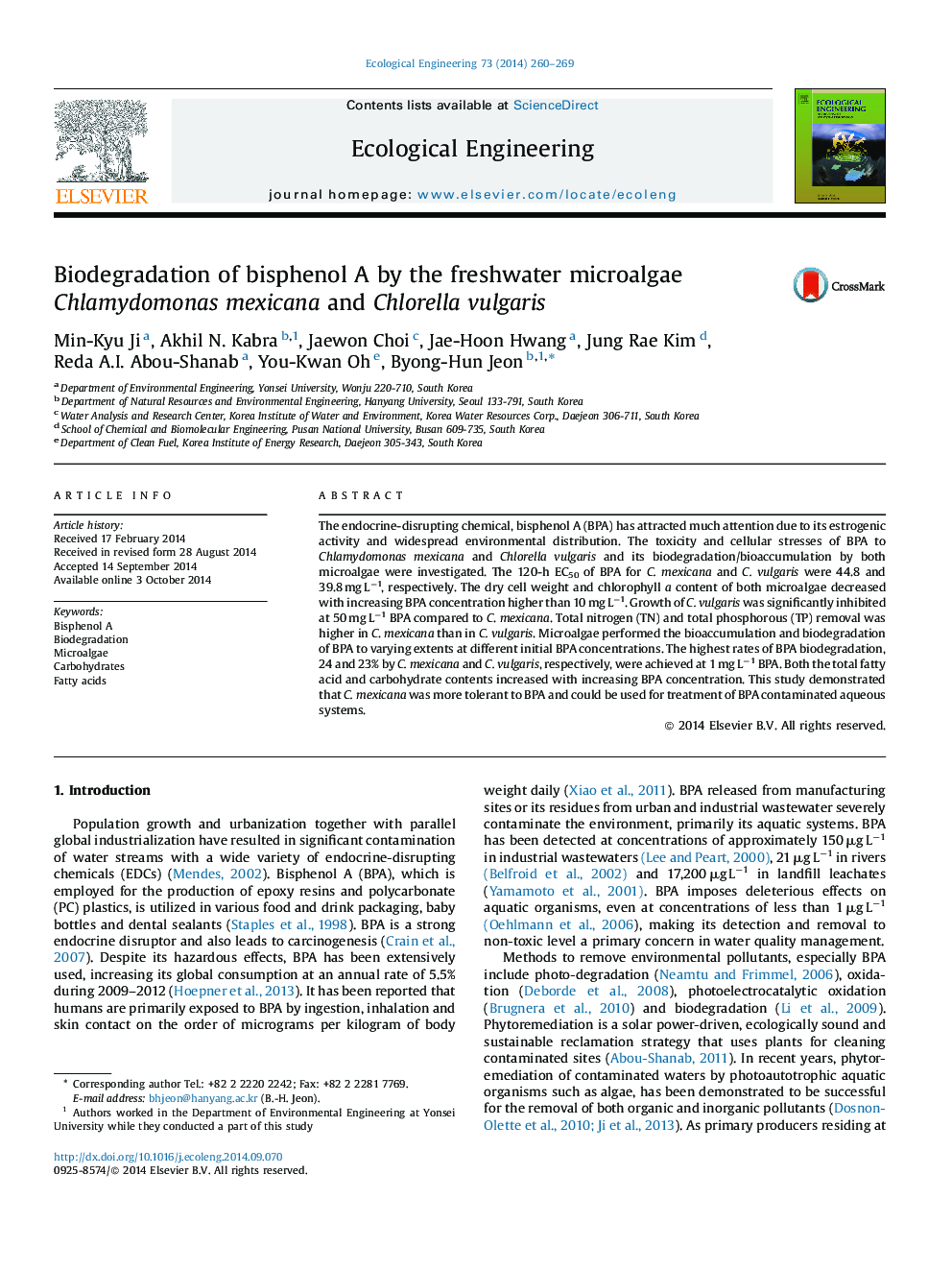| کد مقاله | کد نشریه | سال انتشار | مقاله انگلیسی | نسخه تمام متن |
|---|---|---|---|---|
| 6301913 | 1618026 | 2014 | 10 صفحه PDF | دانلود رایگان |

- A dual strategy for BPA remediation and biofuel feedstock production.
- Chlamydomonas mexicana was more tolerant to BPA than Chlorella vulgaris.
- Microalgae promoted bioaccumulation and biodegradation of BPA.
- BPA increased the FAME and carbohydrate content of microalgae.
The endocrine-disrupting chemical, bisphenol A (BPA) has attracted much attention due to its estrogenic activity and widespread environmental distribution. The toxicity and cellular stresses of BPA to Chlamydomonas mexicana and Chlorella vulgaris and its biodegradation/bioaccumulation by both microalgae were investigated. The 120-h EC50 of BPA for C. mexicana and C. vulgaris were 44.8 and 39.8 mg Lâ1, respectively. The dry cell weight and chlorophyll a content of both microalgae decreased with increasing BPA concentration higher than 10 mg Lâ1. Growth of C. vulgaris was significantly inhibited at 50 mg Lâ1 BPA compared to C. mexicana. Total nitrogen (TN) and total phosphorous (TP) removal was higher in C. mexicana than in C. vulgaris. Microalgae performed the bioaccumulation and biodegradation of BPA to varying extents at different initial BPA concentrations. The highest rates of BPA biodegradation, 24 and 23% by C. mexicana and C. vulgaris, respectively, were achieved at 1 mg Lâ1 BPA. Both the total fatty acid and carbohydrate contents increased with increasing BPA concentration. This study demonstrated that C. mexicana was more tolerant to BPA and could be used for treatment of BPA contaminated aqueous systems.
Journal: Ecological Engineering - Volume 73, December 2014, Pages 260-269